[et_pb_section bb_built=”1″][et_pb_row][et_pb_column type=”4_4″][et_pb_text _builder_version=”3.21.4″ text_line_height=”1.4em” z_index_tablet=”500″]
This post is from Patrick Angyal, a MA student in the Medieval and Renaissance Studies Program and a rare books intern in Special Collections spring 2019. This reflection resulted from the work he has done curating an exhibit for the Special Collections reading room, “The Spirit of Missions: Christian Colonization of Territorial Arkansas.”
While researching and gathering sources for my exhibit in the University of Arkansas Libraries’ Special Collections about missionary activity in territorial Arkansas, I couldn’t help but come face to face continually with stereotypes and tropes of Native Americans perpetuated by white publications. Native Americans to them were almost always heathen plunderers, and when not dangerous, nevertheless “uncivilized” almost to the point of revulsion. But though these harsher stereotypes are dying out, it seemed to me that the tendency to draw on stereotypes and tropes is not simply something just of the past, but rather that there still seems a contemporary tendency to do so as well. For example, I recall the days of playing Cowboys and Indians and dressing up as Pilgrims and Indians for Thanksgiving as a child, popping my hand over my open mouth or putting my ear to the ground to indicate that I am in fact an Indian – because these things are what Indians do, right? I, too, was another casualty of the infamous “Indian burn” on the playground, and remember sitting “Indian-style” during reading time. But now, I cannot help but wonder why it is that I acted this way or called these things what I did. But seeing similar things recorded in history hundreds of years ago provided something of a clue to me: it seems the most common and colloquial conception of “Indian” is undoubtedly influenced greatly both by depictions of Indians in the popular media people grow up consuming or the roles they assumed playing pretend without any real historical basis. People or children call these things Indian because they heard them called Indian – but what does it really mean to play Indian?
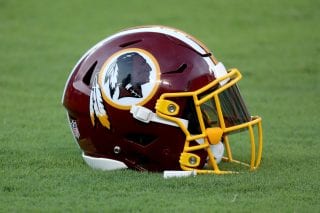
First, I do not at all wish to insinuate that these conceptions are born out of malice, but rather reductiveness. It is for this reason I deliberately avoid the term “racist” here because I don’t believe the malintent and hate is there in most cases to deserve the term. I don’t want to castigate or claim any sort of superiority either; I mean this all mainly as a sort of thought experiment. Children are not hateful, but they are imitative. I think most people have a reductive view of the many various Native American cultures and tribes mainly because their primary media sources about Native Americans do not require or place importance on these cultural or historical distinctions. Popular media like movies (think Disney’s Pocahontas or any Cowboys-and-Indians flick) and even sports teams (the team names of Redskins, Chiefs, or Indians, for example) are not historical media, and so they do not concern themselves with being historically accurate. Criticism of being ahistorical or reductive can be easily waved away by saying that these media were never trying to be historical in the first place, though their entertaining and popular nature means that these reductive characterizations become the dominant cultural mode of conception for “this culture,” though of course Native American cultures are as diverse as any between countries today.
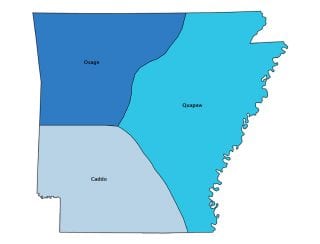
At the same time, I think historical education about Native Americans is far from ideal. Most often, Native Americans are discussed and taught in classrooms as roadblocks, victims, or otherwise merely as people on whom white people had an effect. At least in my case, I learned that there are Cherokee, Choctaw, Quapaw, Apache, Blackfoot, and many more, but mostly that they are just types of Indians and hardly anything more specific or intensive than that.
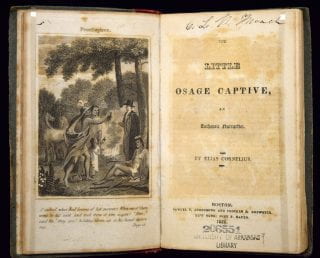
Even now, little to no effort is spent on cultural or literary study of these very distinct tribes and cultures. In my case, all that I had learned about Native Americans until college could be summed up not too facetiously by saying, “Indians helped the Pilgrims, practiced three-sisters farming, and were then defrauded by white men.” And even then in college, I had to take specific coursework in Native American literature to really learn about more specific aspects of their culture and see versions of history through their eyes. The popularized but oversimplified idea of Native Americans as victims seems to carry a perhaps unintended yet nonetheless damning secondary victimization: that because we whites are the victors of Westward expansion, our culture and self-study take precedent. But what about a time when white or European peoples were neither dominant nor particularly powerful in America? The exhibit I am preparing has turned me towards research about Native Americans in the first half of the 19th century and before. It was during this research that I began reading more about some of the first European interactions with Native Americans west of the Mississippi in the 16th century and some of the earliest reports of those meetings. The European accounts of these interactions paint a picture of Native Americans which I had not really seen before; it was a picture far removed from the plains-living, horse-riding peoples that many people tend to imagine today. I’d like to mention some of these accounts of earlier interactions to showcase how our perception of “Indian” is, more than anything, one born of anachronistic popular media.
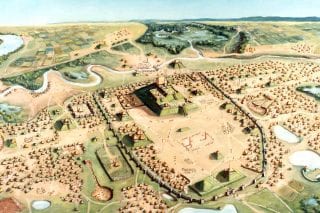
For instance, the Mississippian settlement of Cahokia in present-day Illinois began its development 1,000 years before European contact. Though it may have begun as a settlement, such terminology doesn’t aptly describe Cahokia at its peak, when it could best be described as a city by any European or American standard. According to one source, at its peak in the 12th century AD, “the city covered nearly six square miles and boasted a population of as many as 100,000 people” (“Cahokia Mounds – Largest Archeological Site in North America”), though more conservative estimates still put the population of the city at its height at around 50,000 (“America’s Forgotten City”). The larger estimates put Cahokia alongside some of the largest medieval European cities, like London in the 13th century and Florence in the 14th century in terms of population, although reaching 100,000 inhabitants at least 100 years sooner (Hodges); though the conservative estimates still mean that Cahokia would have rivaled any American city until 1780, when Philadelphia’s population reached 40,000 (US Census Office). In the 16th century, when the conquistador Hernando de Soto crossed the Mississippi westwards, the Spanish described the lands they saw as “among the most agriculturally productive of any they had seen” (“Native Americans”). They saw numerous orchards, extensive agricultural fields, and multiple towns with populations numbering in the thousands, joined by a system of roads and trails (“Native Americans”). In 1608, a Spanish priest had supposedly reported the population of Ivatchuco (near Tallahassee) to be around 36,000, though it was just one of many cities before European contact (“AskUs: Why are there no ancient Native American cities in North America?”). Hardly the construction of a nomadic, hunter-gatherer culture. But more importantly, these ethnographic accounts come from the early times of European and Native American interaction, before a more formularized stereotype of Native Americans had been formed and recounted throughout popular literature. The social structures of Native American cultures were shaped by their needs, which were in turn shaped often by the environment in which they lived, and no one would doubt that America is extremely varied in its landforms and biomes. Why would it be fair to assumed that just because someone was “Indian” that they came from a plains-dwelling people? Tens of millions of Native American peoples were spread out all across the Americas, and in their own lands developed thousands of unique cultures and languages. In North America, Alfred Kroeber had distinguished ten broad cultural areas, and though very general, still may be used as an example to indicate the distinction between various cultures of Native Americans. If someone considers just the stereotypical plains-Indian, they are already being reductive of the other nine general categories, but they are also still being too general in that even this descriptor does not differentiate between all the various cultures and tribes of the Plains, like the Blackfoot, Cheyenne, Comanche, Crow, Lakota, Cree, and Ojibwe, just to name a popular handful. And often they may not have even considered before that these tribes lead an entirely different lifestyle than other more widely known Indian tribes in the Southeastern Woodlands, like the familiar Cherokee, Choctaw, Quapaw, Osage, or Seminole.
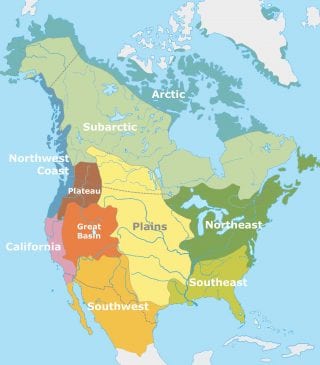
I don’t at all want to chastise anybody for not knowing about anything I’ve just presented here, because in truth I hadn’t even been that aware myself until recently. I’ve heard the names of various tribes before and even read some of their literature, but the vast scale and variety of pre-Columbian American cultures continues to astound me. What astounds me more is that all of this tends to be simply overlooked when it comes to popular media. In my mind, a fuller embrace of the complexity of Native American cultures would provide an even richer opportunity for storytelling and generally deeper, more considerate media. For example, it seems to me that there is already the thought process in which the Western ear hears “European” but does not just accept that all those in the continent are culturally and linguistically the same; rather, it may hear “European” but still accepts that the term constitutes English, German, French, or Spanish people to name only a few. Many of those different cultures end up in our popular media, yet seldom does anyone create a “European” character, but rather an English, French, or Spanish one. Why, then, would it be our inclination to do so with “Indian” or “Native American”? As culturally collective terms, the familiar “American” or “European” connotes the amalgam of distinction (e.g., of distinct states, regions, or countries), while often “Indian” connotes red skin and plains-living to the effect that “Indian” becomes a term on par in vagueness with “white” and “black.” The point of saying this is not that these terms are “bad” or “wrong,” of course, but rather that I think we should be mindful of what these terms include or preclude. I think “playing Indian” is really simply playing pretend to an artificially constructed concept of what “Indian” is, one that seems to forgo history in favor of media or playground-legend. Most of the time, this is harmlessly intended. Children play pretend because they wish to have fun and use their imagination, and repeat certain names and actions simply because they’ve heard and seen them. Sports teams take mascots in order to create a sense of identity for their team or city. At the end of the day, playing Indian is reductive. Is that wrong? I think that question relies on a lot of context and is for everyone to decide for themselves. Works cited “Native Americans.” Encyclopoedia of Arkansas History and Culture. <http://www.encyclopediaofarkansas.net/encyclopedia/entry-detail.aspx?entryID=408&type=Category&item=Ethnic+Groups&parent=&grandparent=> “Cahokia Mounds – Largest Archeological Site in North America.” Legends of America <https://www.legendsofamerica.com/il-cahokia/> Glenn Hodges, “America’s Forgotten City.” National Geographic <https://www.nationalgeographic.com/magazine/2011/01/americas-forgotten-city/> “AskUs: Why are there no ancient Native American cities in North America?” KickassFacts Encyclopedia <https://www.kickassfacts.com/askus-why-are-there-no-ancient-native-american-cities-in-north-america/>
[/et_pb_text][/et_pb_column][/et_pb_row][/et_pb_section]